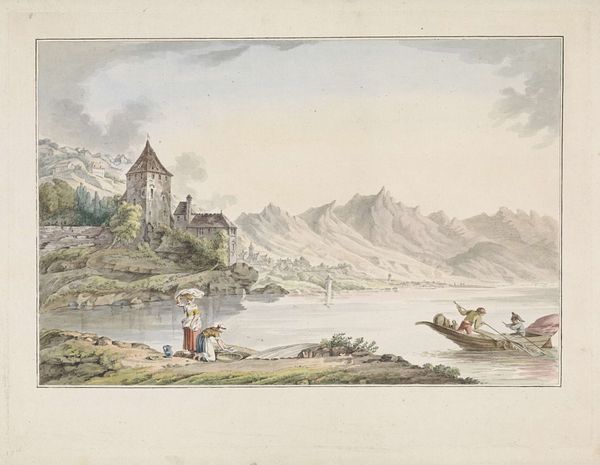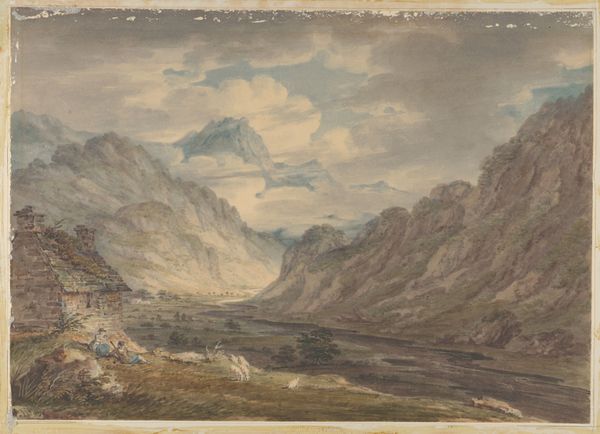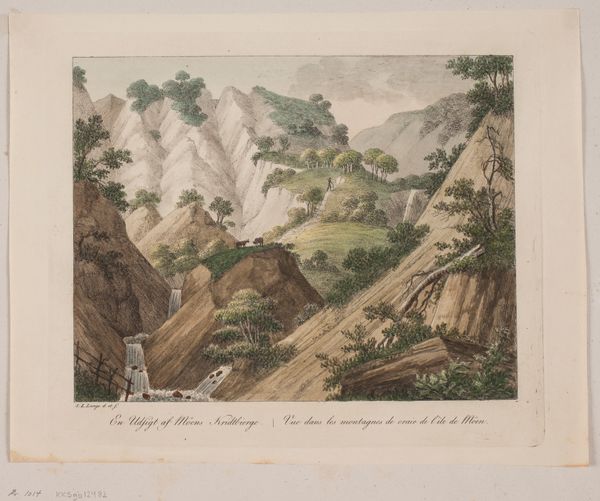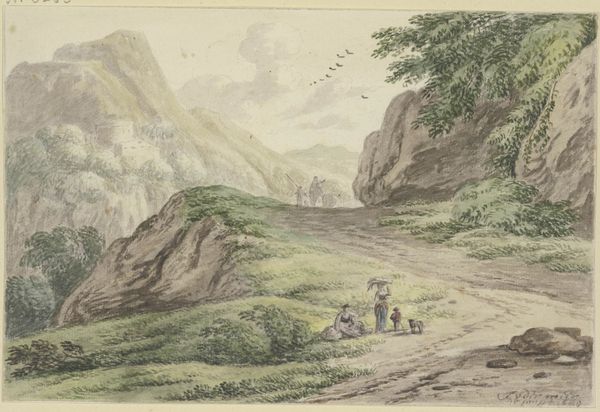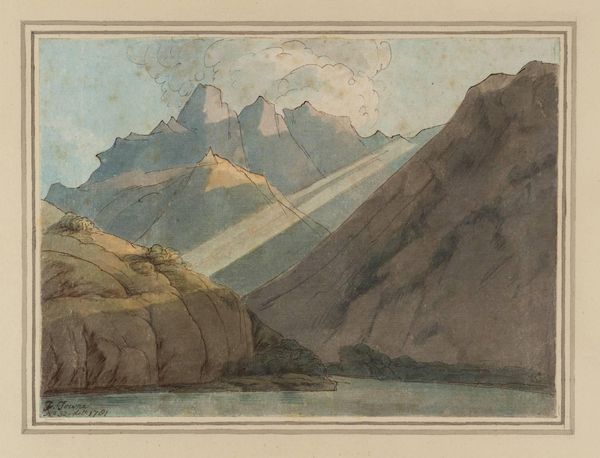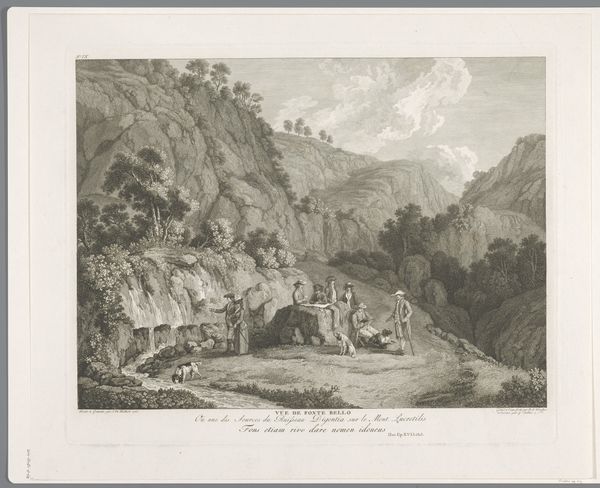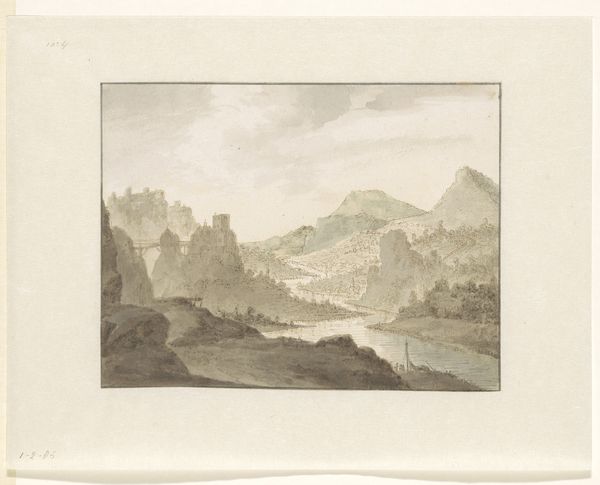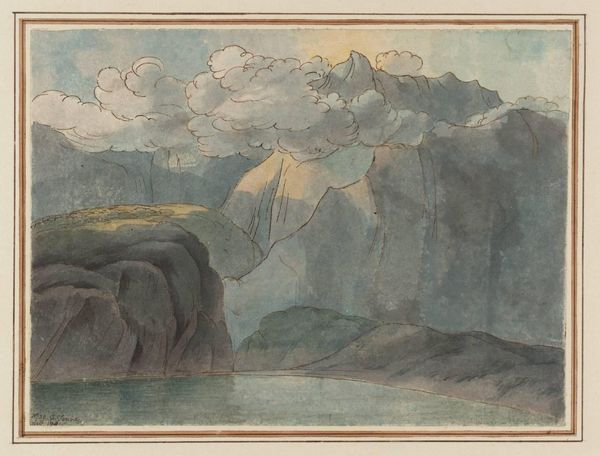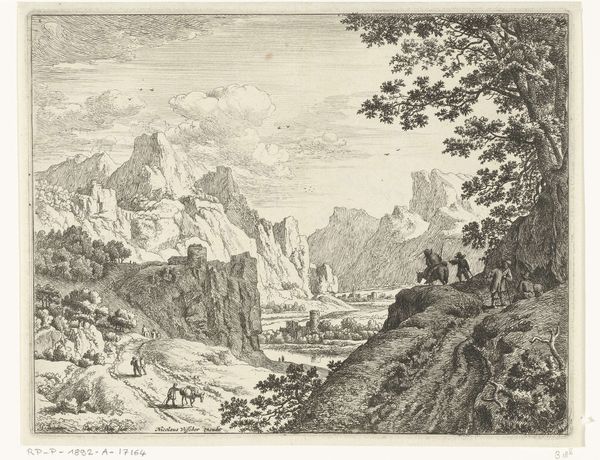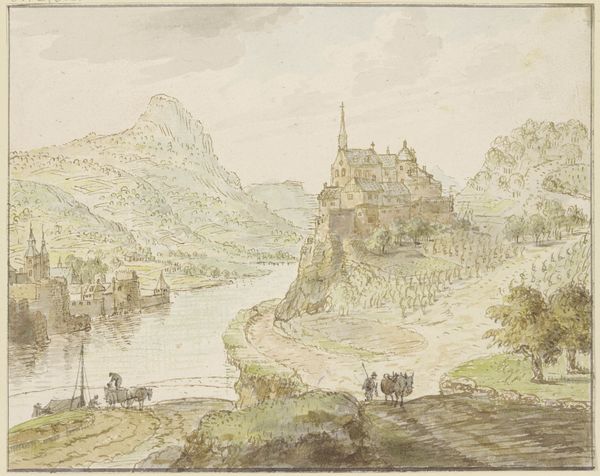
plein-air, watercolor
#
aged paper
#
toned paper
#
light pencil work
#
plein-air
#
pencil sketch
#
sketch book
#
landscape
#
personal sketchbook
#
watercolor
#
romanticism
#
sketchbook drawing
#
cityscape
#
watercolour illustration
#
sketchbook art
#
watercolor
Dimensions: height 322 mm, width 433 mm
Copyright: Rijks Museum: Open Domain
Curator: Let’s discuss "View of the Bridge at Saint Maurice, Switzerland," a watercolor and pencil sketch created by Jan Gerard Waldorp in 1792. It resides here at the Rijksmuseum. What strikes you immediately about this landscape? Editor: It feels like a scene plucked straight from a fairy tale. The delicate washes of color and precise lines evoke a sense of both serenity and barely contained wildness in nature. It feels poised. Curator: I see that. The strategic arrangement of light and shadow does emphasize that drama, a quality characteristic of Romanticism. Waldorp made this en plein air. Consider what was happening in Europe politically. The seeds of revolution were taking root. Perhaps that tension between the tranquil and the turbulent mirrors broader societal unrest. The sublime nature—both terrifying and beautiful—emerged as a prominent theme during that period. Editor: I agree about the composition feeding the sublime. Notice how the bridge almost precisely bisects the scene horizontally and also acts as a link between two opposing sides, and between culture and nature? The architecture provides a measured, rational counterpoint to the imposing, almost aggressively vertical mountains looming in the background. Curator: I see that point, though one might read into even deeper semiotics. Switzerland's image as neutral was growing during the time, so Waldorp highlighting the architecture of unity is quite relevant in this social, geographic, and cultural moment. How does the staffage resonate with you? Editor: They are such a minimal addition! Two small figures resting by the riverbank almost seem like an afterthought. This only adds to the overpowering feel of nature, no? Their diminutive scale reinforces the grandeur and might of the natural world. It makes the observer feel small. Curator: That feels astute, though from a classist perspective it does feel poignant that landscape art often romanticizes the working class within it. To frame it now, we may be critiquing such figures for contributing to the exploitation of the land—though at this point such discussions weren't possible in the artwork as a medium. Editor: Perhaps. For me, it is interesting to consider how even without that contextual awareness, Waldorp demonstrates how formal choices elevate an artwork beyond mere representation. It’s through the interplay of these elements, color, composition, and detail, that the painting truly speaks. Curator: And for me, layering the social history enriches the experience as well!
Comments
No comments
Be the first to comment and join the conversation on the ultimate creative platform.
